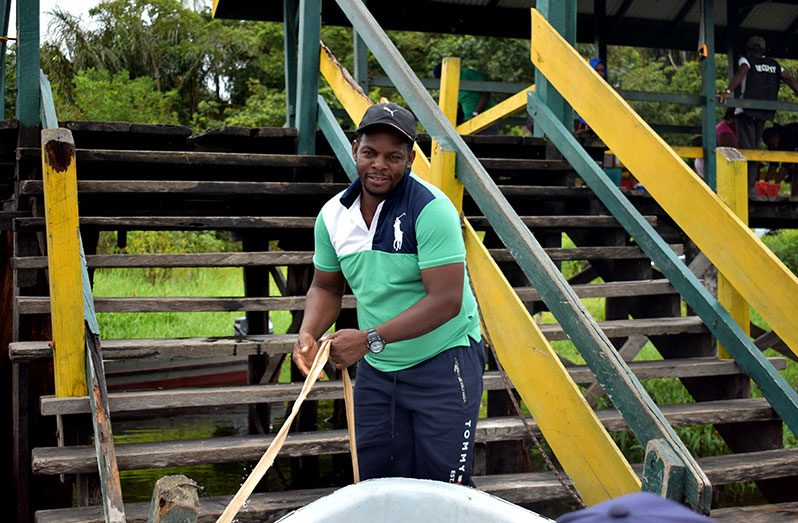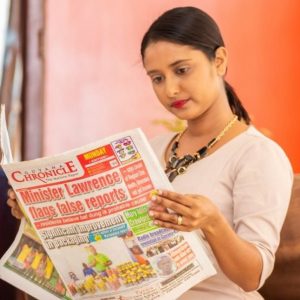– A maroon village rich in history, culture and traditions
DEEP into the backdams of Baracara Village, located more than an hour’s speedboat ride along the Canje River, from Canje, can still be found farm beds that some residents are convinced were cultivated by African slaves who came to Guyana many moons ago and settled in communities along the river.
Said to be the only maroon (descendants of Africans who escaped slavery and formed settlements) village in Guyana, Baracara is exceptionally rich in history, traditions and cultures that many residents insist on carrying on.
Perhaps it was just the reporter, but even the accent of residents there was different, resembling something that you’d hear in African lands. Again, it could very well be just the imagination of the reporter, or not!

“If we check in some of our backdams, we see beds that were cultivated by the slaves; beds that they planted cocoa on. They were planting in different areas along the river, and that’s how they ended up settling in various places along the river,” Chairman of Community Development Council, Marshall Thompson shared with Pepperpot Magazine, adding, “After the revolution, some people went back to Africa, and some decided to stay and settle here, cutting firewood…their means of transportation was by raft and canoeing.”
The residents of Baracara may be using engine boats today, but they have remained a community that depends mainly on farming and lumbering. They use the water from the river, plant their own food, and enjoy a good catch of fish.
There were mainly leaf houses back in the day, although some residents have more recently been constructing modest houses made of wood. With no electricity, the village, with about 300 residents, inclusive of children, relies on solar energy.

Thanks to an initiative by former president David Granger, a boat was made available to transport children to and from school. This eases a heavy burden on parents financially and even on the children, some of whom would’ve otherwise had to ‘foot’ it.
The boat goes for the children up to Torani in the east and goes to transport the children from Baracara Village. Some children would have to be ready as early as 07:00hrs to be able to benefit from the transportation.
Togetherness
The Baracara community does many things together, and residents look out for each other. If an emergency happens, the entire village will come out to offer support, at times, physically and financially.

There is a certain ‘arrangement’ in the village that residents are expected to upkeep. “If there is an emergency, such as a sickness, someone would come out and shout that the person is sick. In minutes, a crowd would gather,” Thompson related.
If the sick person has to be sent out to New Amsterdam immediately, residents would sub enough money for the gasoline needed to make the trip. “The fastest boat would have to take the sick out at no cost. That is our arrangement.”
Almost the same thing will happen if someone is getting married in the village. “The tradition is that every family would help to find the ingredients…we would call a meeting, and everyone would choose what they will contribute and we would keep the wedding. All the men in the community connected to the girl and boy would go cut the wood, sell it and it would assist in buying things for the wedding. The whole community will come out to support. We don’t work with invitation; it’s word of mouth in Baracara.”
The togetherness and cooperation would be evident in other aspects of village life. “If I am building my house, the men available would come up and give me a hand. I don’t have to pay for this.”

Peaceful and at Ease
Things can be difficult at times, financially speaking. So residents are hoping that the authorities will look into creating jobs for them. “We need jobs in this community…we want them to include us in projects; planting, tinning, anything. This would really benefit the community,” Thompson expressed.
When things are especially rough, though, the tradition in the village is for residents to share what they have with each other. Thompson was keen to point out that this doesn’t include a bartering system. “Our tradition here is sharing whatever produce we have. You don’t have to give me for me to give you; we share among community members.”
Alva Hinds, 80 years old, from a community called Windsor Forest, located nearby Baracara, is a father of six who grew up in the river. He reflected on how times have changed but noted his continued love for the community.
“We used to cut firewood and take it to Port Mourant, Albion, and Corentyne. We also did a lot of farming. Now, I’m just in my kitchen garden. And it’s only lately that we got engine boat; we used to scull boat,” he shared, adding, “We never used to buy rice; we used to plant, along with plantain, cassava and those things. We hardly went to New Amsterdam to buy anything, and we don’t sell greens to one another.”
While doctors would visit the community once a month, pensioners would travel to New Amsterdam to uplift their pensions. Irrespective of the challenges typical of remote locations, mHinds said: “You’re at ease here. It’s quiet and everybody lives peacefully.”



.jpg)










